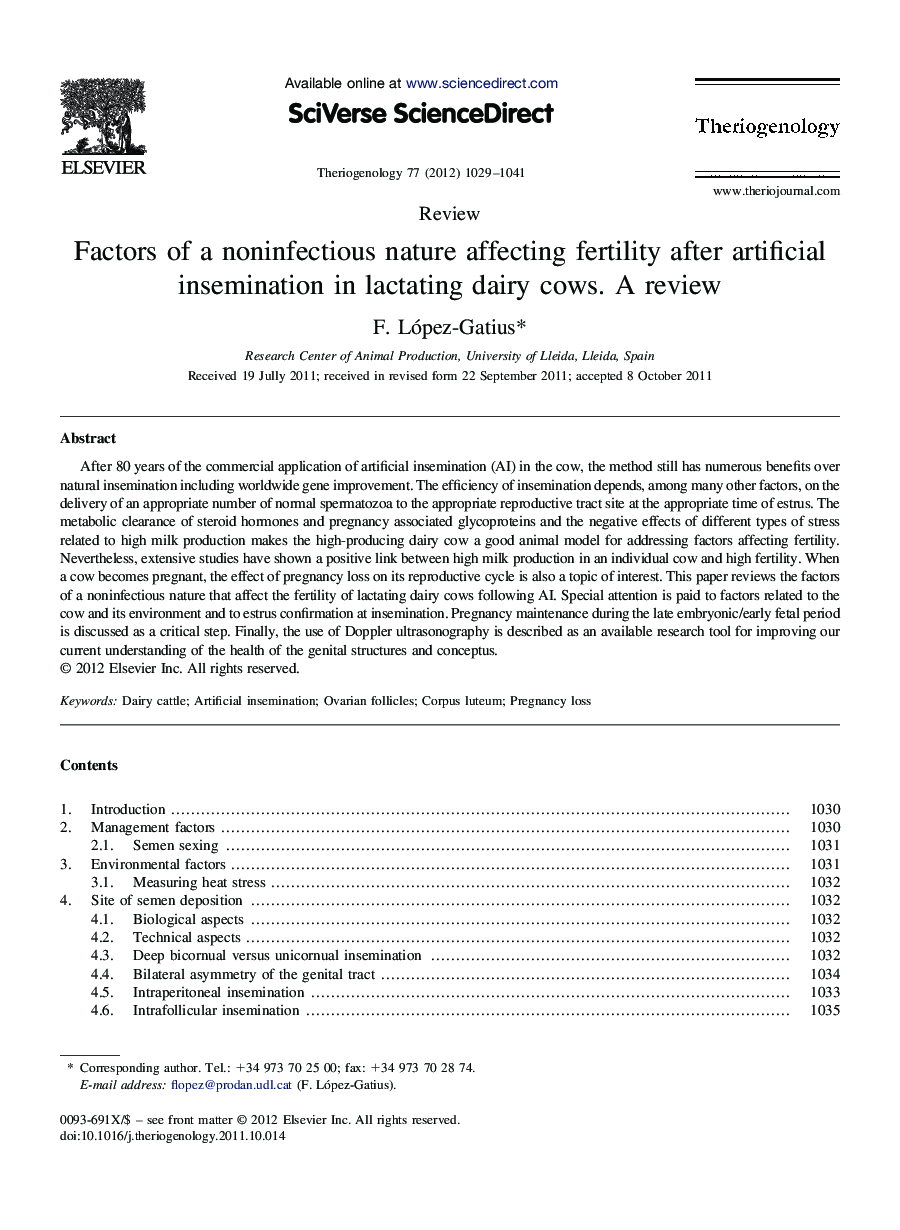| Article ID | Journal | Published Year | Pages | File Type |
|---|---|---|---|---|
| 2095568 | Theriogenology | 2012 | 13 Pages |
After 80 years of the commercial application of artificial insemination (AI) in the cow, the method still has numerous benefits over natural insemination including worldwide gene improvement. The efficiency of insemination depends, among many other factors, on the delivery of an appropriate number of normal spermatozoa to the appropriate reproductive tract site at the appropriate time of estrus. The metabolic clearance of steroid hormones and pregnancy associated glycoproteins and the negative effects of different types of stress related to high milk production makes the high-producing dairy cow a good animal model for addressing factors affecting fertility. Nevertheless, extensive studies have shown a positive link between high milk production in an individual cow and high fertility. When a cow becomes pregnant, the effect of pregnancy loss on its reproductive cycle is also a topic of interest. This paper reviews the factors of a noninfectious nature that affect the fertility of lactating dairy cows following AI. Special attention is paid to factors related to the cow and its environment and to estrus confirmation at insemination. Pregnancy maintenance during the late embryonic/early fetal period is discussed as a critical step. Finally, the use of Doppler ultrasonography is described as an available research tool for improving our current understanding of the health of the genital structures and conceptus.
